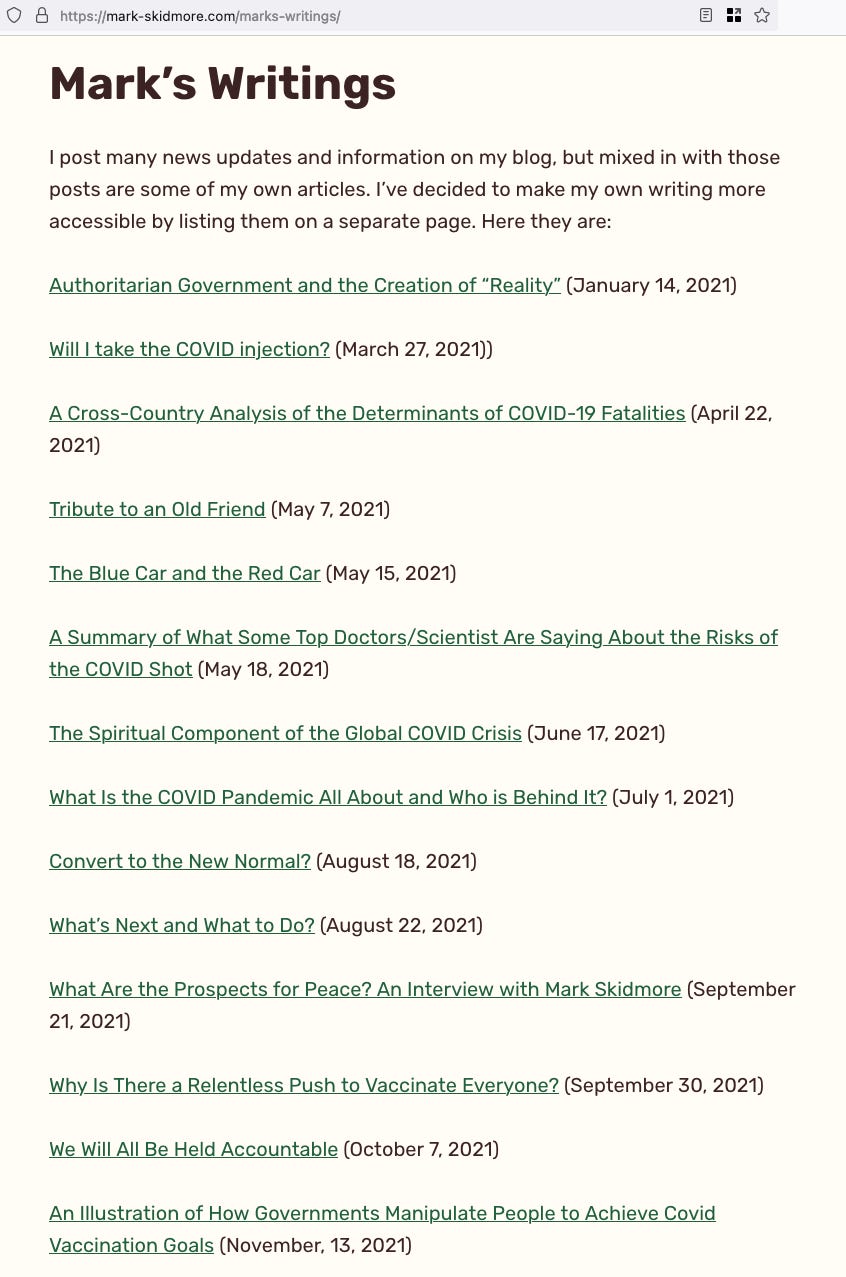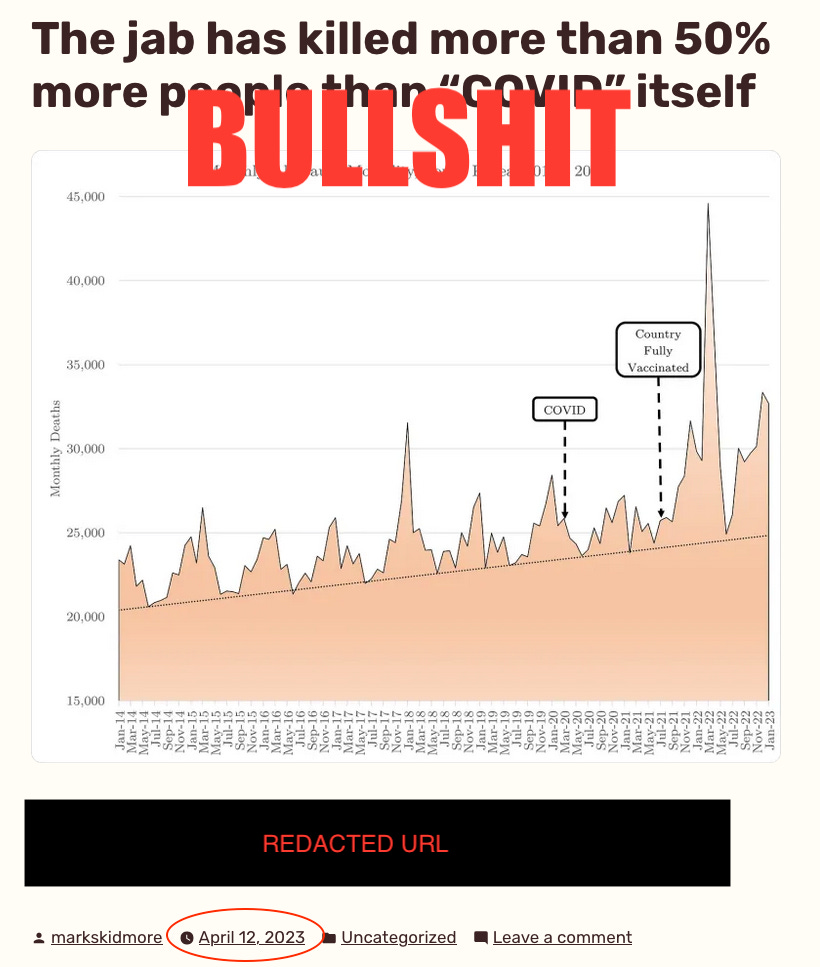What happens when an economist tries to do real science?
He becomes a hero of disinformation spreaders everywhere, of course
This is outside the Bad Newsletter’s normal purview but I’m running with it because it’s one of the most darkly hilarious things I’ve seen in a long time.
It’s becoming clearer all the time that the discipline of economics, with a few notable exceptions, is closer to a religious high priesthood than anything even approximating a science. Much of economics is polemic, but with graphs. And there’s never been a finer example of the discipline’s colossal hubris than the boondoggle that’s just gone down at the supposedly prestigious journal BMC Infectious Diseases.
The meat of the story is detailed by the Chronicle of Higher Education. Here is the bullet point version:
- A paper was submitted to BMC Infections Diseases, peer-reviewed, and published
- It purported to show that the number of deaths caused by Covid vaccines “may be as high as 278,000.”
- It was based on methodology so shoddy it’d likely be thrown out by a high school science fair
- It was written by an anti-vaxxer
- It was funded by an anti-vaxxer
- It was essentially all unmitigated fucking bullshit
I read the Chronicle’s account in a daze of increasing incredulity. Epidemiologist and Ph.D. candidate Gideon Meyerowitz-Katz said the paper — The role of social circle COVID-19 illness and vaccination experiences in COVID-19 vaccination decisions: an online survey of the United States population — was “among the worst things I’ve ever seen published.” And here’s what might have been a big part of the reason:

Yes, Mark Skidmore is an economist. Not an epidemiologist, an economist. And as the Chronicle noted, what he “stands by” is an absolute joke of a methodology:
[Skidmore] took the number of vaccine-caused deaths that the respondents reported knowing about — 57, according to the study — and used them to estimate the total number of people who had died for the same reason. To flesh out the estimate, he counted deaths reported to a federal database called the Vaccine Adverse Event Reporting System, known as VAERS, and arrived at the figure 278,000.
This methodology for calculating vaccine-induced deaths was rife with problems, observers noted, chiefly that Skidmore did not try to verify whether anyone counted in the death toll actually had been vaccinated, had died, or had died because of the vaccine.
Skidmore’s ridiculous effort became the most-viewed paper in BMC Infectious Diseases’ history, because fringe media outlets eager to boost its fanciful conclusions made it go viral. The horse bolted straight into a china shop, and gave anti-vaxxers everywhere something they’d never shut up about: an actual, peer-reviewed study.
Too bad nobody gave the peers who did the reviewing too much of a look, because the named peer’s qualifications are as follows:

That’s right — the named peer reviewer, Yasir Elhadi, does not have a PhD, and may not have even had a Master’s degree when he reviewed the paper. What’s more, you’ll note that he holds a “Bechalor” in Clinical Pharmacy from Omdurman Islamic University in Khartoum, Sudan. Clearly, the peer review process was in need of, well, peer review.
It got some pretty quickly. Once the study was published, the scientific community pounced, and the journal relented. As of 11 April 2023, the study is retracted, about as profoundly as it’s possible for a retraction to be. Let’s decode some of the language in BMC Infectious Diseases uses, because not only is it a savage self-indictment, it is deeply funny. All emphasis is added by me.
The editors have retracted this article as concerns were raised regarding the validity of the conclusions drawn after publication.
This means something like “every qualified epidemiologist in the world emailed us asking what in the almighty fuck we were playing at.”
Post-publication peer review concluded that the methodology was inappropriate as it does not prove causal inference of mortality, and limitations of the study were not adequately described. Furthermore, there was no attempt to validate reported fatalities, and there are critical issues in the representativeness of the study population and the accuracy of data collection.
“Furthermore, there was no attempt to validate reported fatalities”
“there was no attempt to validate reported fatalities”
“no attempt to validate reported fatalities”
“no attempt to validate reported fatalities”
“no attempt to validate reported fatalities”
This means that the claimed number of deaths was just kind of completely made up.
Whew. That’s a lot packed into a 113-word retraction. So far, we’ve got we fucked up, every qualified person knows we fucked up, and the study should never have been published because it was bullshit from top to bottom. But we’re not done yet! What else did it say?
Lastly, contrary to the statement in the article, the documentation provided by the author confirms that the study was exempt from ethics approval and therefore was not approved by the IRB of the Michigan State University Human Research Protection Program.
Oh.
The author lied, in print, about having ethics approval.
Perhaps it doesn’t need to be said, but Mark Skidmore shouldn’t have a job. In my opinion, his actions well go beyond the remit of academic freedom into outright fabrication and lies, and his contribution to the disinformation economy has done untold damage. And Mark has form. Let’s find out what he’s been posting on his personal blog, which rejoices in the ironic title of “Lighthouse Economics.”

But I don’t know Mark. Perhaps he’s contrite. What’s he been posting since what (for any actual scientist) should be a career-shattering, deeply shameful take-down?

Well. There you go.
I hope you’ve enjoyed this insight into how some aspects of the disinformation economy work. Perhaps I should dabble in economics myself? The more I find out about where the bar for economics is set, the more I feel that I could just kind of skip over it.




